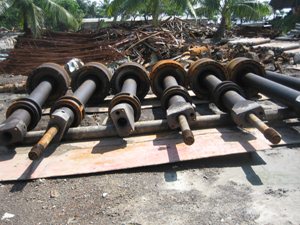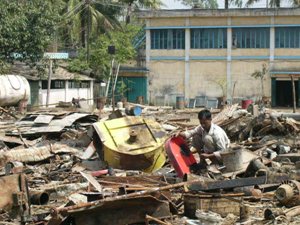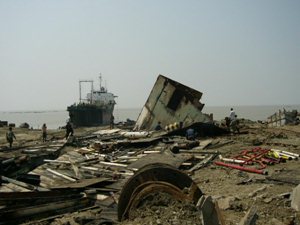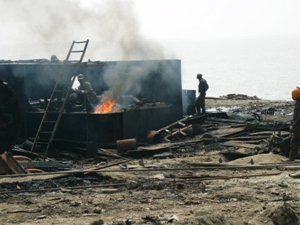- HOME
- Project
- Ship Recycling
- What is Ship Recycling?
What is Ship Recycling?
These are the current conditions of ship recycling in the ship-breaking yards at the seashore of developing nations. Poor working conditions result in a high loss of life and health problems amongst the manual laborers, and there is also a large problem of environmental pollution.
The Recycling of Scrapped Ships
The average useful lifespan of a ship is 20 to 30 years.As ships reach the end of this long journey, most are scrapped in either Bangladesh, India, or China, and their iron recycled. This is the process known as Ship Recycling.
Dismantling is Harder Than Building
Until the 1980's the dismantling of ships was carried out in Japan, Korea and Taiwan, but starting in the 1990's demand for iron in Bangladesh, India and China began to grow and this coupled with the low cost of manual labor in these countries led to the industry moving there.
Currently these countries buy ships whose useful lifespan is nearing their end from developed nations which have stopped ship-breaking due to economic conditions.
However, in these countries where manual labor costs are low, there is a lack of work safety standards, insufficient environmental protection of the surrounding area, a poor working environment, and contamination of the world's oceans from the ship-breaking yards. This is a global problem.
 |
 |
|---|---|
| Ships are called "an excellent resource" as approximately 90 percent of the materials used in them can be recycled | Non-recyclable parts are dumped in the city or at the seashore |
 |
 |
| The seashore after a ship has been dismantled. There is a negative impact on the environment from waste oil, asbestos and other harmful materials | At these seashore ship-breaking yards, maintenance and consideration for safety are insufficient. This leads to many casualties through explosions and various accidents |
